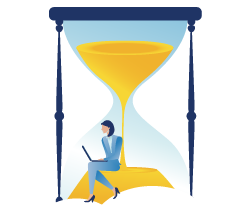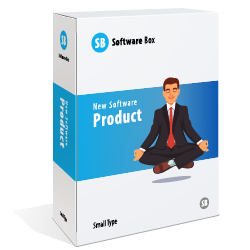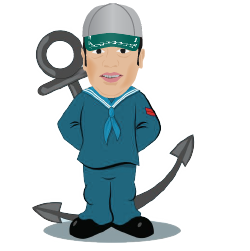How to double your profits, charge more for your services {Profits, Profits, Profits} FAST

I’m going to show you exactly how you can double, triple your profits and charge MORE for your services as quickly as TODAY! With my step-by-step guide.
I have grown 3 separate businesses that made 7 figure profit from scratch and I want to share with you my top secrets and the big mistakes you are making right now that is costing you big time…
Read on and I GUARANTEE your profits will soar. Adopt these principles to build an unstoppable Business and have the right type of clients queuing up to do business with you.
Seriously, this course outlines the EXACT model I used to grow 3 separate 7 figure PROFIT businesses. It’s the same system I apply to every business I run, start, or consult to.
Disclaimer: This is for service-based businesses. If you are a product-based business, this article (CLICK HERE) is going to be more suitable for you!
Enjoy…
Lesson 1
The Myth Of Time For Money Pricing.
In this section you’ll learn the importance of how you look at yourself.
Let’s face it… you’re never going to increase your profits by charging market rates.
I’ll show you how to change the way you look at yourself and the value that you bring to the table.

I want you to think about the first time you ever had to attach a price to yourself as a business professional..
If it’s yourself, it was probably when you got your first job. You were sitting in front of your, potentially new boss, and after talking about yourself, your CV, and then the position; the conversation undoubtedly shifted towards money.
“How much do you want to earn?”
Now, you probably had enough sense to go into this discussion knowing what, the position you were going for, typically earnt. If you asked for too high of a salary, you might not get the job; if the salary is too low, then you’re stuck making less than what you could have made.
And then, when you went out on your own and started your own business, you probably did something similar. You researched what the value of a similar business like yours charged. Or, if you were freelancing, you just reverse engineered your salary to come up with an hourly rate.
This is what most people end up doing. After all, whether we realize it or not, we want to be able to justify the price we’re charging. The most successful of professionals don’t give a damn about market rates, or what others charge, I know I didn’t. They know that ultimately this doesn’t matter. They realize there’s no such thing as the right price for the services they offer.
Check out this FREE course on increasing your profits… 'If You Want to Charge More, You Need To Deliver The Right Deliverables'
My goal with this mini course is to help you escape the black hole of market rates. …
And it’s totally doable.
When I first started out on my own, I charged $50 an hour because I wanted to earn a cool $105k a year. And all the best resources out there for Management Consultants were suggesting this-or-that calculator or telling me or to just divide my salary by 2,000 (the number of average working hours in a year)… so I settled on $50 an hour.
And boy, things have changed for me since then. Just last week, we won a project at $30,000 for 7 days work — or about $600 an hour.
Truthfully, the skills I’m using (mostly: advising business owners on marketing and growth, mergers and acquisitions and, on the side, we work with a firm of accountants who offer compliance work) are the same skills I was using when I started my consultancy firm that went from Zero to $5.5 million in just 4 ½ years, making over $2 million profit. They are the same skills I use on every business I invest in, set up and consult to.
Someone once said to me "the sign of insanity is keep doing what you’ve always done and expecting different results!!!"
Over the next few lessons, I’m going to give you tactical and conceptual advice that will help you escape market rates.
Because here’s the thing…
Market rates are for losers.
Market rates imply that you’re offering a commodity service that just about anyone can offer — even those charging $4 an hour in India.
Market rates are out of your control. The market dictates and determines what you’re worth. The market says that you’re defined by the technicals of what you do and not the results you deliver to your clients.
This first lesson is intentionally light on strategy and tactics, but it’s meant to make you think about what you’ve been doing through now.
Until you change the way you look at yourself and the value you bring to the table, you’re not going to be able to apply the concepts of this course. The first change you need to make to your business is the way you think.
Question #1: Why did are you reading this course? (Pick one)
- “I’m doing ok but I want to start selling on the value I provide”
- “I’ve been struggling to take on clients and want help attracting new clients”
- “I’m fed up just getting by and want to earn as much as I can”
Lesson 2
The Real Reasons Consultants Are Underpaid.
In this section, you’ll learn the importance of how you define yourself.

Depending upon what you ‘label’ yourself as, will depend whether or not you can charge a PREMIUM rate….so let’s delve into this in more detail.
Now, we’ll talk a bit about why most business owners tend to be underpaid (it has to do with presentation), and afterward we’ll analyze the way you’ve presented yourself to clients in the past.
Let’s take an accountant for example:
Did you know that the worst thing you could say when meeting with a prospective client is that you’re an accountant!!!
And that the second worst thing you could say would be to qualify yourself as an accountant, with telling them what it is you do (e.g., “I’m a partner”)?
Why is this?
It’s important to look at what those words mean from the perspective of a client. It’s fine to describe yourself to your peers as being an accountant, and you probably want to tell others you’re an auditor if you happen to be at a conference for auditors.
But giving yourself the job title of Accountant can cause prospective clients to immediately have the wrong expectations of you.
What’s wrong with the word “Accountant”?
“…a person who does tax returns, book keeping, Vat, or the like, selling work or services by the hour, day, job, etc.”
That’s the dictionary definition for “Accountant.”
An accountant is somebody who does work for somebody on a temporary basis billed (in the client’s head) by the hour (in your head 6-minute billing).
There is an underlying association that the client is in a roundabout way your temporary employer, as they are paying the bill. THE TIME FOR MONEY BILL…
As you can see the working relationships employer/employee are usually sort of similar: there’s the “greater” party (the client) and the “lesser” party (the accountant).
By using the label “accountant,” you’re stating that you’re similar to an employee. You expect to be brought their papers and you’ll do the work. The client is the BOSS.
My goal with this course is to help you become a high-value Entrepreneur. And while we’re not quite yet ready to talk about how to do just that (it’s going to take a few more lessons), you need to realize that it’s critical to discard the identity of “your label”… at least when talking with a potential client.
Because once you shed that identity and can become seen by your client as a partner and ally, instead of just “the accountant we hired”, you’ll be able to charge a premium rate AND you and your clients will be happier. They’ll get better work from you; you’ll get more interesting work that just COMPLIANCE!
...But you gotta ditch the word " your label " first.
And what’s wrong with describing yourself this way?
I’ve hosted a lot of events and conference, and the attendees were accountants, equity directors, financial advisors, brokers or lawyers.
Whenever I’d survey the room and ask people what it is they did, I’d get back responses like:
- Corporate M&A Lawyer
- Broker
- Equity Director
- Financial Advisor
- Corporate Finance Director
- Head of Acquisitions
- Etc Etc
And this is fine because this is exactly what I was asking for — again, this was a peer (me, a fellow professional) asking the audience what they did.
However, most professionals allow what it is they do to define their work. When talking with a potential client, they might say “I’m an accountant of 30 years” and pitch their firm as an “accountancy practice”. The same goes for a dentist…. “I’m a dentist of 35 years” and pitch their company as a “Dental Practice.”
Next, we’ll be covering commoditization and how to free yourself from being seen as a commodity provider, but let me try to explain why defining yourself by what you do is a bad idea.
Imagine I meet you at a networking mixer, and you tell me that you’re an “accountant in Kent.”
Let’s then pretend that we get to the point where we’re talking about taking me on as a client, and you quote me a higher-than-normal rate for the work you’re planning on doing.
I might respond with, “Hold on a second… I’ve seen firms online who can do that for $99. Why should I hire you?”
The underlying issue is that from the beginning, you defined yourself as a provider of services — and the implication, even though it’s probably far from the truth, is that accounts is accounts is accounts. It’s a commodity. A product. And you’re trying to sell that product for significantly more than some of your competitors.
It would be like driving down the highway, having your petrol light turn on, and getting off at the nearest exit. You see two petrol stations. One is selling petrol at $5 a gallon, and the other is selling gas at $50 a gallon.
Which would you choose?
Unless you’re mad, you’ll buy the $5 a gallon petrol. After all, it’s just petrol. And while we might vehemently defend that not all accountants are equal, by defining ourselves as just an “accountant”, we’re implying that they are.
So chew on these ideas for the rest of the day. Think about how it is you present yourself to your clients. Are you pitching yourself as an employee-without-benefits who provides commodity development services? And if you are, how are you going to ever be able to break free of how the market prices your commodity service?
This is why most professionals are underpaid. They’re caught in a race-to-the-bottom and they’re selling and pitching the same stuff as everyone else.
Question #2: What made you want to start value pricing your work? (Pick One)
- “I want to make more profits per client”
- “I think it will help me convert more leads into clients”
- “I’m fed up with being undervalued and a busy fool”
Lesson 3
How to avoid being seen as a commodity?
So, hopefully you understand the concept now that ditching that ‘label’ is the key to getting more lucrative clients…YES?

This next section is all about positioning yourself as an investment and NOT and expense.
Stop focusing on what it is you can do and start thinking WHY…
Here’s how to avoid your clients thinking of you as a commodity…..
Now, we’ll look at how you can avoid positioning yourself as a commodity.
In the last lesson, we discussed why the labelling yourself is not ideal — especially if you’re looking to find higher value, more lucrative clients. (That’s why you’re getting this course, right?)
So as a natural follow-up, let’s start to talk about how you can distance yourself from coming off as a commodity, and instead present yourself as a premium professional to your clients.
What makes a management consultant different?
A lot of us, tend to avoid the word management consultant. It conjures up images of public school boys sitting in “strategy meetings” with FTSE 100 companies. My distaste for the word came from an idea that management consultants were all talk and no action — they advised their clients on what to do and often had little to no real world experience at practicing what they preach. Everything coming from a text book!!!!
But I think before we throw the baby out with the bathwater, it’s vital to understand what management consultants do well, and why their clients typically pay them so well. In the world of business-to-business (B2B) relationships, there are two universal truths:
If you can make your client #more #money they'll #hire you. If you can help your client #cut #costs they'll #hire you. That is exactly what Entrepreneurs Gateway will do for you
…Right back to the course.
It’s critical to realize that this is ultimately why people hire you — your clients have reasoned that paying you management accounts can, for example, help them with their problem and in turn get them more customers which makes them more money. It’s not about the management accounts, for example, if you are an accountant, it’s about what they think that management accounts will do for them. Or they want a tax review done because they think there’s a chance it’ll save them a lot in taxes.
Management Consultants capitalize on these two universal truths and sell solutions to their clients that are meant to directly affect the business of their clients – And this is what you need to do as well.
The issue is that most people focus solely on what it is we do, instead of why it is we do.
Hear me out this will all start to make sense and become clearer…
And this naturally sets us up as a commodity, because the what without context is just an expense; a cost that the business incurs. And when businesses buy stuff, whether it be reams of paper, computer equipment, or accounts, they want to minimize their costs.
Becoming clearer?
But what happens when we start focusing on the why?
When we stop selling one of our services and start instead selling why, if your clients need management accounts say, what it will do for their business? We can then position ourselves as an investment instead of an expense. An expense is management accounts; an investment is managing cashflow so they know what they can afford on advertising and marketing to acquire customers, whose total value outweighs what it cost to get those customers.
You may be familiar with the concept of “cost centers” and “profit centers”, terms popularized by Peter Drucker more than 50 years ago.
In most businesses, the sales and marketing team is a profit center — their sole purpose is to make the business more money. But customer support, IT and Compliance and Audit are often seen as cost centers — they keep the business running, but don’t typically affect sales. (Really smart businesses blur the line, and train departments who are typically seen as an expense, like a call center support team, on how to increase the lifetime value of their customers.)
The closer you get to the actual businesses and understand their goals, the better it is for you and your business.
For many, this can be very uncomfortable at first.
Accountants, for example, feel they not all amazing at business. You probably never had to manage a department or run a business other than your own. Getting involved in your clients’ businesses can be intimidating — after all, it’s easier to sell what we’re confident at.
The rest of this course is dedicated to helping you overcome whatever roadblocks — either internal or due to a lack of experience — are keeping you from becoming more vested in the businesses of your clients.
Simply changing what you call yourself or just doubling your rates isn’t going to set you up to be a high-value management consultant who’s in perpetual high demand. It’s going to require you to radically rework the way that you work.
So over the next few lessons, I’ll be covering a strategy that you can use to change the way you sell yourself to your clients. Sound Good? 🙂
…Guess what? You’ve already started that change.
The other lesson, when I had you consider the implications of the ‘label’ and describing yourself by what you do for others, you set into motion a shift in your outlook.
Let’s keep that momentum up!
Lesson 4
What are your clients really looking for?
In this section we’ll discover how to solve your client’s problems so that they will say YES to working with you.

If you want to stay ahead of your competition, and achieve a 100% success rate, then you need to stop focusing on your accolades and focus on your client.
Here’s what you can do to win them over.
I’ve hired plenty of professionals over the years. When running a consultancy, I had to recruit people, and nowadays I work with a pool of accountants, marketing professionals, business consultants and financial experts who help me do what I do. This has put me in the position of both working both with clients and as the client/boss — often times simultaneously.
I know what it’s like to put my money on the line and go through the hoops necessary to engage with people.
Here are a few things to keep in mind whenever dealing with clients, especially if they haven’t engaged you just yet.
- Your clients want to be put first
- Your clients’ chief concern is their own interests. This is critical to understand, but I’ve seen a lot of people who don’t realize this.
You’ve probably seen (or are guilty of) proposals that are centered upon the professional and their accolades, their website that quips about their team and the services they offer, with nothing anywhere that says here’s what YOU will get by working with me, or have obsessed over test-driven growth strategies, etc.
This is often how we try to sell ourselves because we’re proud of our skills and qualifications, probably spending years to acquiring them. But to the client, you and your skills are simply a means to an end — the end being the squashing of some particular business problem they face. So whenever you’re talking with a potential or actual client, always question whether the focus is on you or them.
When networking; before rambling on about yourself and what you do, ask who you’re speaking with to open up to you. What’s their business like? When did they start? What do they do day-to-day at work? What’s the chief problem they’re struggling with right now?
When qualifying a new lead, realize that somebody who might feel intimidated by working with you is cautiously optimistic that you could help them. Sympathies with the fact that they may be on the hook — to their customers, maybe their boss, or to their stakeholders — to solve a particular problem, and that this is a big deal to them.
When describing a particular task or service, don’t describe it technically but describe it in a way that aligns with the interests of your clients. Instead of selling services, let them know that they will significantly gain, both personally and the company.
Your (prospective) clients want any excuse to say “no”
I like to say that we all have a particular risk profile associated with us in the minds of our clients.
Like a bank who considers your credit score when lending you money, your clients also consider your risk. If it’s a sure bet and they know they’re going to make a massive payoff, they’ll eagerly pay your high rates…
…but if they’re worried about your capacity, either technically (like, can you actually do the work) or professionally (are you reliable and provide a good services and know how to work within timelines?).
Or you are just an entrepreneur and offer the same services any other entrepreneur can offer then they won’t be as willing to deepen their pockets for you.
The key thing we focus on in this course is helping you to lower the risk you present to your clients.
That’s why we’ve started talking about how to figure out the why behind a service, and we’ll soon be looking at how to quantify its worth, identify the right solution, and so on — because all of these factors contribute to lowering your risk.
Beginning from your very first contact with a prospective client and all the way through sending a proposal, your #1 job is to eliminate the risk you present.
When you finally ask for the sale, they’re going to be racking their brain and trying to come up with any objections (“the price is too high,” “she’s not experienced enough,” “I doubt whether my problem is solvable, and he’s not convincing me he can solve it”) that they can use to say no.
Because people have a fear of buying, especially things that aren’t impulse buys and are untested (like you applying a chunk of your time to chipping away at their problems).
And this is what sales is all about.
You need to overcome the objections, either real or imaginary, that your clients have about working with you, and show that you are capable of solving their problem. That’s it. It’s not about experience, case studies, testimonials, a beautiful website for your business, referrals, or whatever else. Those are all just factors that, done right, can increase your credit score with a client.
So with this, our fourth lesson, out of the way, you should now have a clear understanding of the mindset shifts that need to accompany the tactics that the rest of this course is dedicated to.
Lesson 5
How to use Stamford Questioning to figure out what your clients need?
In this section, I want to introduce you to my own technique, which if used correctly will GUARANTEE a near perfect 100% close rate when winning over a new client….

It’s been tried and tested and I know it will help you win that new client.
Here’s how to do it.
If a new lead reached out to you today with a request, what would your process be for moving that prospective client through your sales pipeline?
If you’re like most people, you probably don’t really have one. You’ll probably arrange a phone call or in-person meeting, and you’ll likely do a bit of research beforehand.
The most important thing you can do early on when talking with new leads is to develop a process around how you learn about who they are and what they want. Don’t leave your conversations open-ended; come armed with an agenda.
Becoming a high-value management consultant starts with understanding the why behind each business client you work on. We’re going to look at the exact process I use to reveal the pains behind each client I work with.
Stamford Questioning
When I first started working as a management consultant, I used to work in fleet street and during our lunch break we was not allowed back in the building. This was fine on hot summer days but we don’t have many of those in the UK! I found myself sheltering from the cold listening to court cases.
What really stuck out was that Barristers that won always had an agenda; there was always some truth or idea that they wanted the person who they were talking with to admit.
This method of questioning is used by trial barristers, psychologists, and academia — and there’s no reason we, as professionals, can’t do the same. When new leads come my way, I lead them through a series of questions that helps me both understand the why behind a particular client, and shows my clients that there’s something a bit different about working with me:
Step 1: Listen
Here the client tells me about what they think they need. They might come to me with a thought out list of requirements, or they might just have a rough idea of what they’re looking for.
“So, tell me a bit about your business. What are your plans. goals, and when are you looking to have them done by?”
This is the step that all of us do — we hear the client out. But most people, at this point will move toward discussing the services they offer. If it’s bookkeeping, the discussion might shift toward what software do you use, do you do it manually, how many receipts a month do you typically have, etc. But I’m not interested in any of that yet…
Step 2: Identify the Trigger
“That sounds fantastic. Tell me a bit about how you set up your business – What is your current accountant doing to help you achieve your goals? — what changed, or what happened, that made you realize, ‘I need a new accountant to achieved $X’?”
…..or, if you are a website designer….what is your current set up, what plans and strategies have they put in place, or what has happened that made you realise that you need someone else to improve your website and generate more leads?”
Here, we want to know what event occurred to spark this change. Often, this can be a series of built up events that is ultimately set off by something specific.
Step 3: Highlight The Problem
“OK, so $TRIGGER happened, and you decided to seek someone like me out. You wanted something fixed… Could you tell me more about what that something is? What am I solving?”
Remember: No prospect exists without a backing problem. Your competitors likely won’t care enough to investigate what that problem is. If we know the problem, we can better tailor the proposal and what we end up doing toward that end.
Step 4: How Painful Is The Problem?
“That makes total sense. Before we go much further, I want to tell you a bit about how I work that might be a little different than most. I only want to work on business’ where I can deliver an ROI. We’ll be able to figure out my costs once I know more about exactly what needs to happen to make your business a success and solve this problem, but do you mind sharing about what impact — financial, reputation, or whatever — $PROBLEM is having on your business?”
Most people won’t be willing to open up to you and share the inner workings of their company. At this point, I’ll often present my Master Services Agreement. (by producing a non-disclosure agreement, shows the customer that you respect their business, and you realise that what they are about to tell you is confidential and shouldn’t be public knowledge).
Step 5: What’s The Cost
“Let’s try to figure out what it means for your business to have this problem persist. What’s the opportunity cost or the risk overhead of $PROBLEM?”
You want to understand what it means long-term for this problem to still be a problem. When we eventually go in for the sale, we’re going to anchor the need for this client against the cost of this problem not going away. We want the prospective client to admit the cost to us. Note that not everyone will have these numbers available — but that’s OK. You’re mostly looking for ballparks or ranges.
Step 6: How Should Tomorrow Look?
“We don’t want that happening. So let’s move on to a happier note — when we solve $PROBLEM, describe what tomorrow looks like. What does it mean for your business to have this fixed? What sort of impact will it have?”
– (This is often referred to as future pacing). The question above was pretty painful… we’re talking about how uncomfortable this problem is. Now we want to switch gears and move to happier pastures.
Let’s let the client dream about tomorrow. What does it mean if this problem goes away or the business succeeds? Try to quantify in hard numbers what sort of impact you might have on the client’s business.
Step 7: Tie It All Together
“This was really valuable because this is going to help me better understand the why behind this client, which will help us together make sure that what I end up doing aligns perfectly with that end goal. Once we can figure out the total complexity of this business, I’ll be able to provide you a quote, and as long as the net effect of this on your business heavily outweighs the cost it’ll make sense to talk about moving forward.”
A few key things are happening here. Most importantly, we’re really stressing our focus on their business and their financial well-being. We want them to be successful. We don’t want our portfolio to be a graveyard of failed companies.
The next part of the conversation will be to look at what that tomorrow might mean (financially, reputationally, etc.) for our clients, which will also help us determine how we can make that tomorrow come into being.
What’s really important to understand is that you’re not just looking to collect data. You want your clients to externally vocalize the necessity of working with you. You want them to see that something’s different about working with you. You’re not just reacting to a request — you’re guiding them through understanding what this means for them and their business.
And this is going to help you tremendously when it comes time send off a proposal. My closing rate is near 100%, and I’m almost always the most expensive quote my clients get.
Lesson 6
How to determine the value of a project?
Learn how to win your clients over by seeing what tomorrow could bring them.

Help them visualize tomorrow and sell to your clients REAL value
The previous lesson I covered how Stamford Questioning can be used to both figure out the pain behind a project and to get a glimpse of what tomorrow should look like for your client (e.g. after the problem goes away). The next step is to quantify just how valuable the successful completion of your services is.
Figure out what you can influence
The first thing you want to do is to figure out how you can influence the financials of your clients’ businesses. (Note that not every client is looking for you to help them make money. Non-profits, startups, and other types of organizations might have other aims).
I have a student offering business plans as an added value service. He wanted the avoid the commoditized deathtrap that is business planning, and was aiming for a minimum $2+ budget for most of the “Business plan” he was putting together. So when a rehabilitation clinic came his way looking for a business plan, he used Stamford Questioning to determine that what they were looking for was more patients. He knew that he needed to sell them on something of value that he could control.
How could a business plan help them get more patients?
How to quantify the financial upside of a Client
Him: “What’s the average value of a patient in a bed?”
He knew he needed to start with this question, as it was the closest he could get “to the money” of this prospective client’s business.
Clinic: “About $20,000.”
He knew he couldn’t influence this number, so he had to dig deeper.
Him: “And how many people do you typically talk to before you get a patient?”
Clinic: “About 10 people.”
So now he knew that for every ten people who contact the clinic, they get one patient. In sales terms, they have a 10% conversion rate from lead to customer.
But he knew that he couldn’t influence how effective the clinic is at “selling” new patients, though some basic back-of-the-napkin math now showed that a lead is valued at around $2,000.
Him: “So if I could produce you a Business Plan, and the only purpose of this Business Plan is to focus on your marketing budgets and strategy and in turn get you a minimum of one new lead a month, you’d be looking at more than $24,000 in added revenue in the first year — right?”
Clinic: “That sounds right.”
Ah, but he CAN influence how many leads this clinic gets.
He’s just leveraging what his prospective client has already told him to draw some assumptions about what would happen if their business generated just one new lead a month.
And this also helped him better understand what they really wanted: more leads.
He wouldn’t be proposing a business plan. Rather, he’d be proposing more leads for their business — which will help them get the new patients they desperately need.
Through Stamford Questioning and then quantifying what tomorrow could look like, he was able to figure out that this business really didn’t need a business plan.
They needed more leads. The client had already realized this (they either consciously or subconsciously realized that a business plan might equal more patients), but now they’re talking to someone who also understands this. They won’t just be getting a business plan, they’ll be getting something produced solely for generating leads.
When he ultimately quoted them $5,000, how do you think they responded?
Who wouldn’t pay $5,000 to make more than $24,000+? (Well I know some business owners who wouldn’t but that’s why they struggle).
The clinic wasn’t able to then compare his costs to what other business plan writers were charging — the product he was selling was totally different. It might be fulfilled through the creation of a business plan, but that’s not what he was proposing to do.
Needless to say, he ended up winning their business.
Lesson 7
Double your closing rates by using a technique called Stamford–anchor
In this section, you’ll learn how to get one step closer to closing that deal. Discover how to stop being a cost and charge more money. Let me show you what I mean.

I don’t do “value-based pricing”
My clients will often ask me why I’m asking them these questions, and why I’m so keen on understanding the value of their project. What surprises them is that I’m not using the Financial Upside to help me figure out what I’m going to charge.
Basing your costs on value is what’s known as value-based pricing, and the idea is that if you can make your client, say, $100,000 — you can charge them anywhere between $1 and $99,999 and they’ll still come out “on top”.
To be honest…
I’m not a huge fan of value-based pricing, unless used in the right circumstances, you’ve just saved someone $100,000 in tax say.
I charge a weekly rate for my time, and right now I bill upwards of $25,000 a week. If you practice value-based pricing, you better be awesome at predicting the future. I think there’s just too much guessing that’s happening when you’re quantifying the value of a client, and so much of it is out of your control.
Just because a new upstart pizzeria down the street has bought a state-of-the-art pizza oven doesn’t mean they’re going to be successful — the ingredients, location, neighborhood demand for pizza, marketing effectiveness, and more all contribute to the ultimate success of that venture.
Likewise, the work you do for your clients is often a small part of their total business. (There are times where I do advocate value-based pricing, but they’re for more turnkey services or acting as non-exec director/ virtual FD.)
Instead, I anchor my costs against the upside of the business. I’m not guaranteeing a particular outcome, but I show my clients that I’m aiming toward it.
And for each and every requirement of the client, I ask myself:
“Will this get us closer to the goal?”
I tell my clients that I only want to work with clients where I'm an investment.
I don’t want to ever be an expense.
If the math doesn’t work out, and my estimated costs outweigh the projected value, I’ll either pass on the client or work with the client to find a way to balance out that equation. This is a fantastic way to help my clients see that I’m on their side and not just a bean counter. I don’t want them to spend money recklessly;
I want all of my clients to net a return-on-investment, or ROI, from working with me.
The psychological effect of Stamford-anchoring
When a prospective client reads one of my proposals, the first number they stumble upon isn’t my cost.
And most businesses lose out when their price is the first (and often only) number found in their proposals.
A few months back, I quoted a client $40,000 for 3 days of work. My rate is significantly above what others charge for the kind of technical work that I do (a mixture of company restructuring, estate and legacy planning). But before the client read anything in my proposal about what my costs would be, I referenced the six-figure PLUS tax saving we uncovered together during earlier discussions.
So by the time they saw my five-figure price tag, they’d already had in their head that I’d be helping them save six-figures. I anchored my cost against the saving that we’d previously mutually agreed upon.
You can also do the same on the increased revenue they will benefit from working with you.
Not only am I able to then win higher price clients, but it’s also easier for me to win them. Instead of seeing my price floating in a vacuum, my client sees it contextualized against the value of the solution I’m proposing. And rather than having them need to consider whether my costs are too high, too low, or just right, my clients see my price as the cost of admission to the land of tomorrow (Future pacing).
Lastly, because my clients know that I only want to work with clients where I can deliver an ROI, I’m able to overcome the objection of,
“Is it even worth doing this, especially at the cost I’m being quoted?”
Compare this to the traditional way most of us price proposals:
We meet with a client, talk about their requirements, and then disappear for a while to write a proposal.
We write down what we’ll do, what it will cost, and how long we think it will take, and send it off. And then we hope and pray that the price is what they’re expecting.
The longer we take going back to a client the less likely they are in doing business with us. Rather than sending off your proposal and hoping for a best you need to physically see the client and go though your proposal and sign on the dotted line THERE AND THEN.
Lesson 8
How to tie it all together with a killer proposal?
In this section you’ll learn how to produce a proposal which guarantees your client will say YES.

Get a step-by-step proposal structure to get more clients and customers to sign up.
Proposals are meant to be persuasive, and a bunch of line items with a price tag doesn’t persuade anyone of anything. People buy when they know a seller has something made specific for them — and your proposal should do exactly that.
This is why I’ve told you to learn about the why behind each client. When proposing a project, you want people to know that you have a solution for them, and not just a deliverable. You need to show your prospective client that you know exactly what they need and why they need it, and that you have a plan for moving forward. Here’s the basic structure of my proposals:
1 – Remind them why we’re here
Remember back in Lesson 5 when we talked about Stamford Questioning? In that lesson, I showed you why selling is more than just responding to a client request — we looked at why it’s critical to understand the root problem or problems behind each client.
You’re going to want to kick off your proposals by both reminding your client about why they’re here, and by letting them know (once again) that you understand their needs. You want to recite, ideally word for word, exactly what they told you in these meetings.
- What problems do they have?
- How is it affecting their business?
- Monetarily, how are they being impacted as a result? It might sound counter-intuitive to reiterate the problem, especially if you don’t have a background in sales.
But it works.
Just like Stamford-anchoring an upside against your costs helps justify your costs, anchoring the solutions you’re proposing against the problems being solved is highly effective. Don’t be afraid to remind your clients about just how important this service is for their business, even if you assume they’re fully aware of that.
1 – Show them tomorrow (Future)
The solution is the removal of the problem — it’s NOT what you plan on doing (e.g. the actual service). After describing the pain behind the service, you now want to forecast what “tomorrow” could look like for their business (Lesson 5) along with the Financial Upside that comes with it (Lesson 6).
Remember:
This isn’t a fairy tale; you’re not inventing anything here. You’re simply including the takeaways from the conversations you had with the client about their business and what parts you’re able to influence and quantifying what that would mean for them.
3 – Present your offer
This is where you actually talk about what you’ll be doing and how much it’ll cost. And while you do want to include some technicals about the process, but you want to always bundle each feature with its related benefit, known as a feature benefit statement.
Here’s where you simply bridge the pain with the solution:
That’s how you determine what needs to be done. And there’s not just one path, or offer, that connects every problem to its solution.
Think about the problem of being cold and wet in a rainstorm.
The solution is to stop being cold and wet. The offer can be any number of things: an umbrella, a poncho, a piece of cardboard, or a toasty lodge with a roaring fireplace. These are all ways to stop being cold and wet, each with its own degree of intensity and completion.
And that is why you want to understand the pain behind each client. If you don’t know what that is, and you simply respond to whatever superficial need is brought to you, the offer you end up proposing is risky.
You might do great work, but that’s no guarantee you’ll solve their problem. And mastering the art of understanding how to bridge problems with solutions will help you uncover multiple offers, each of which can be pitched to your clients at different price points.
This makes it so you can compete against yourself — Offer A vs. Offer B — instead of competing against the world. My proposals end up becoming long-form sales letters for one: the client whose business I want.
And my clients aren’t just receiving a list of instructions with a price tag that can be later shopped around to the lowest bidder. They’re getting a letter from someone who has a deep understanding of their business and their needs and has a plan for making things better.
Lesson 9
How to double your rate without scaring off your client?
Discover how to double your fees without your clients wincing!

You’re gonna love this…..double your profits without taking on extra clients!
That shift in mindset — from expense to investment, business owner to management consultant, cheap commodity to a provider of solutions — isn’t something that happens overnight. Like with anything, it takes time. You can shorten that time by being around the right type of people hint hint… Entrepreneurs Gateway.
But if you work at it and are OK with experimenting, you will be able to charge significantly more without scaring off your clients.
When I first started my first company back in 1994, we charged $30 an hour. We thought this made for a fine living, and we also thought this was right. After all, it’s what other accountants were charging.
But as our company grew and I began to learn the strategies I covered over the previous lessons, two interesting things happened:
We became more successful. Our company grew from being just the initial founder (12 of us) to 300 full-time employees and over $6 million a year in profits.
Our clients were more successful. The work we were doing was the *right* work. It was grounded by the business problem that had to be solved. It became easier to close deals, and we were starting to get a lot more referrals and repeat clients.
Why I think taking control of your income is so important…
In early 2014 — after about a 2 year break (I had exited my practice to start a software and marketing company) — I started consulting but this time not a management consultant and business development consultant but still a consultant – again.
- I got bored of not working.
- Three companies I invested heavily in failed
- My ex MD embezzled a considerable amount of money so I didn’t get my finial MBO lump sum.
- I made some poor investment decisions.
I believe consulting is the best way to make money quickly. And when I returned to consulting, I used the same strategies and tactics I learned running my practice — much of which I covered over the previous lessons.
In the first 12 months, I netted $620K or $1490 per hour I’m not 50x better than I was back when I was charging $30 an hour. I’m not 50x more networked. I’m not 50x more “famous”.
But I do know how to gauge how valuable the problems are my clients bring me. And this helps me win high-value clients at the rate I want and that my clients are more than happy to pay.
I’m a fairly introverted guy (unless you get me on a subject I love). I’d have a hard time looking someone in the eyes and telling them my five-figure a week rate if I wasn’t confident that I was worth that.
What’s next:
I hope you got a lot out of this free course.
My goal was to help you get a good grasp of the strategy of why and how to price higher. As I mentioned above, mastering this has helped me tremendously both personally and professionally, and it’s not really something that a lot of tax professionals are all that comfortable with.
- Could I get your review? I put a lot into creating courses like this, so if you have a few mins I’d love for you to reply to this post with what you thought of the course and what you plan on doing next.
- Share this on Facebook and Twitter? You probably know other accountants, so would you mind sharing this free course with your friends and followers? I’d love for as many accountants as possible to learn about this stuff – because, let’s face it, a rising tide lifts all boats.
The more people who practice these strategies, the more likely we all are to work with better, more knowledgable clients in the future.
Here’s the link: https://practicepro.co.uk/
All they have to do is subscribe and they are in!
MOST IMPORTANTLY: There’s more to come…
This course, though brief, is a lot to digest. It’s going to take some practice to really implement much of what we’ve covered in your business.


